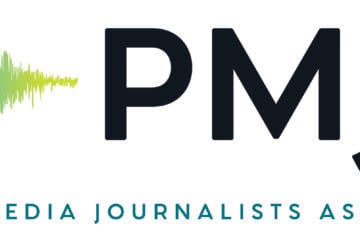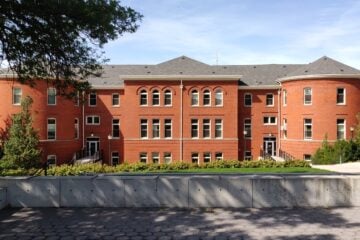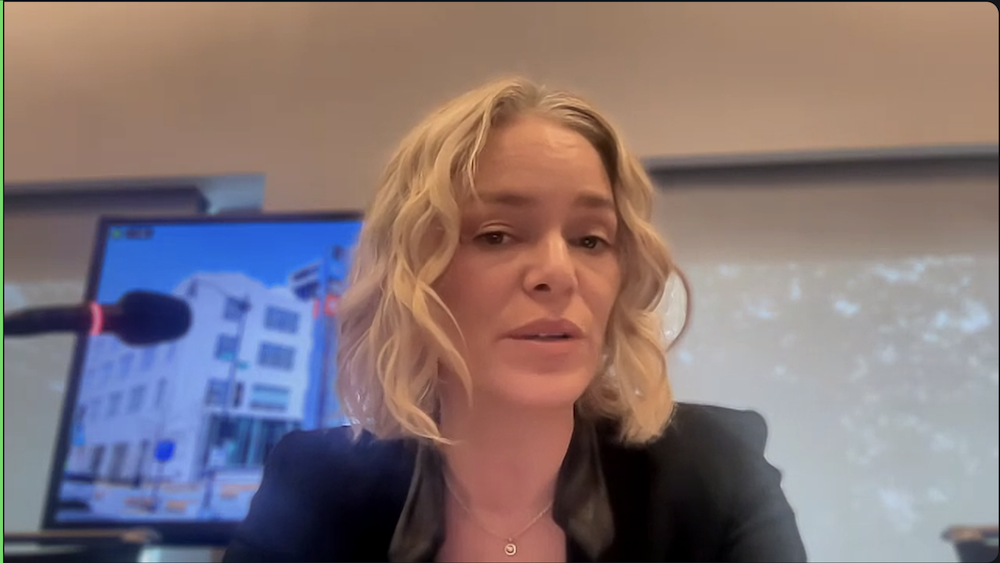New alliance helps rural stations make a case for more funding, support
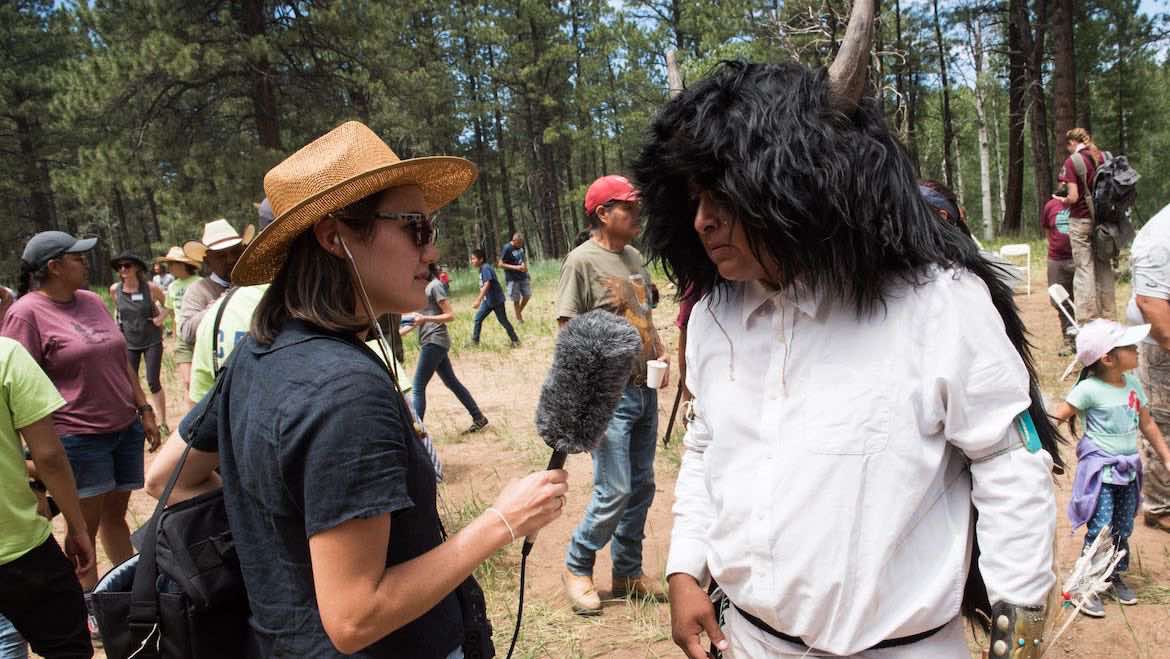
Russell Daniels / KUER
Kate Groetzinger, a Report for America corps member in KUER’s Southeast Utah Bureau, interviews a Pueblo dancer at Bears Ears Summer Gathering at Bears Ears National Monument in July 2019.
Adrian Velarde had been working in public media for just two weeks when he got a lesson about the importance of radio in rural communities.
Velarde joined KRWG Public Media in Las Cruces, N.M., in 2009. At an outreach event, a woman approached him.
“She thanked me and said, ‘I live down in the valley. I can’t afford cable. If it wasn’t for KRWG, I wouldn’t have TV or radio. Public media is my window to the world,’” said Velarde, now the station’s GM. “It instantly showed me how important our existence is for rural citizens.”
Many leaders of rural public media stations have similar stories. The vital nature of their work has spurred them to team up with NPR on a new initiative, the Alliance of Rural Public Media. Launched in January, the initiative is bringing together station leaders to share ideas and educate lawmakers about their needs.
The Alliance issued a report in October 2022 and held an event on the Hill in June where a panel of leaders discussed their stations’ impact. The Alliance continues to seek opportunities to highlight stations’ work and connect them to lawmakers on the Hill, while also advocating for the fiscal year 2024 federal funding request.
This fall, the Alliance will continue to make the case to Congress why funding for public media is essential for supporting rural audiences with local news, lifesaving emergency alerts, and local arts, music and cultural programming. It expects to update its website in the next few months with blog posts illustrating how a loss of federal funding would affect rural stations.
Marta McLellan Ross, VP of government and external affairs at NPR, calls public media’s rural service “the embodiment of the universal-access mission of public broadcasting.” After joining NPR in 2021, she wanted to engage with rural stations about how public policy and legislation could help them expand their services.
“One of the things that became very clear was that we have such a strong group of stations that serve rural areas, particularly when it comes to local news and the challenges that rural audiences face when getting information,” Ross said. “We needed to tell that story better.”
Ron Hetrick, CEO of WITF in Harrisburg, Pa., said he sees the Alliance as a chance for rural stations to develop their own congressional connections that could rival those of the bigger stations situated closer to political hubs.
“Some of the largest stations have dedicated government relations folks,” he said. “Being able to group all of our work together is a more efficient and intelligent way to convey the importance of what we do for disconnected communities.”
Mark Leonard, GM of Nebraska Public Media, echoed Hetrick’s thoughts.
“Our legislators in Washington and in our states need to know about what we do,” he said. For Leonard, the Alliance is further evidence of a public media strategy that is “local and regional, and not just national.”
Demystifying the political process
Ross and her team began studying the needs of rural stations with a nationwide listening tour. “We had conversations with them, got to know their communities, what they do, and drew out themes and threads about their work,” she said.
Key talking points emerged: a widespread lack of resources that hinders growth, difficulties with staffing and recruitment, and a strong commitment to local news. Meanwhile, their service to rural listeners has become ever more crucial as newspapers shut down, news deserts expand and misinformation spreads via social media.
Rural residents don’t feel “connected to their communities anymore,” Cara Williams Fry, GM of Northwest Public Broadcasting in Pullman, Wash., told Current. “They’re not quite sure what’s going on, because the papers are gone or they only print once a week, or there’s just one reporter where there used to be 10.”
These findings spurred Ross to move ahead with the Alliance. It would “provide Congress with a better opportunity to understand what funding does to serve rural audiences, what funding for public media does and why these stations need that support,” said Ross. “It all goes back to the individuals they’re serving.”
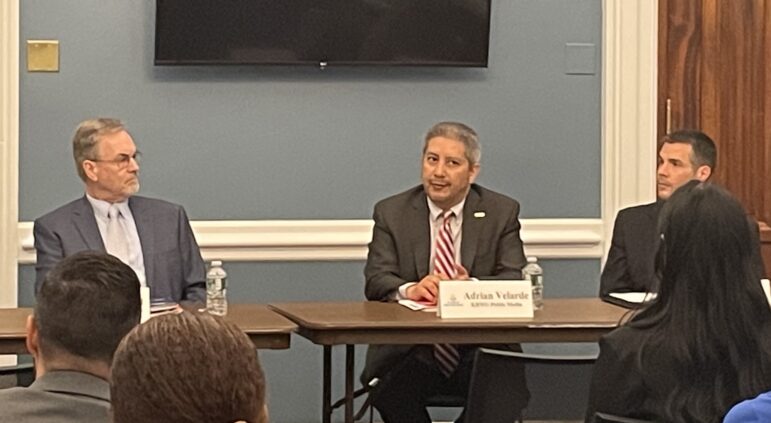
NPR distributed the Alliance’s debut report widely on Capitol Hill to House and Senate offices, including the Rural Caucus, the Public Broadcasting Caucus and members of appropriations committees, as well as to both state and federal legislators and public media stations across the country. The June 6 Capitol Hill event drew an audience of congressional aides and was introduced by the co-chairs of the Rural Caucus, Rep. Adrian Smith (R-Neb.) and Rep. Terri Sewell (D-Ala.).
“We rely on the media in rural America,” Sewell said. “… There are so many things that public media can do to help further advance the needs and policy solutions for rural Americans.”
Leonard, who spoke at the event alongside Velarde and Hetrick, said the reaction to the event “has been indirect, but positive,” adding that it “was enlightening to our 3rd Congressional District Representative Adrian Smith, who co-hosted the hearing.”
Leonard said he believes the Alliance’s work will have a longer-term impact on donors. “It has been an effective talking point for [Nebraska Public Media] with donor prospects,” he said. Leonard said he also expects the Alliance to be helpful as NPM discusses with donors its plans for the Midwest Newsroom, the regional journalism hub focused on Kansas, Missouri, Iowa and Nebraska.
Ross has been helping rural stations make a bigger impression on legislators, “identifying lawmakers and encouraging stations to connect with them,” she said. “We want to make it less of a mystery for someone who hasn’t engaged in that kind of political process.”
The Alliance’s initial report lays out three ways lawmakers can help rural public stations: continue federal backing for public media, increase support for public radio collaborations and partnerships, and maintain funding for the Next Generation Warning System, which will support station equipment upgrades. CPB opened its first application window for NGWS grants in August.
“This funds transmitters, antennas and important pieces of equipment and infrastructure,” Ross said. “If you’re a small rural station on a very, very limited budget, you often need to choose between providing services or upgrading your equipment. More often than not, the stations use duct tape and glue to keep their equipment running.”
‘A moment to shine’
Station leaders are confident that improving infrastructure for rural stations will continue to be a bipartisan issue.
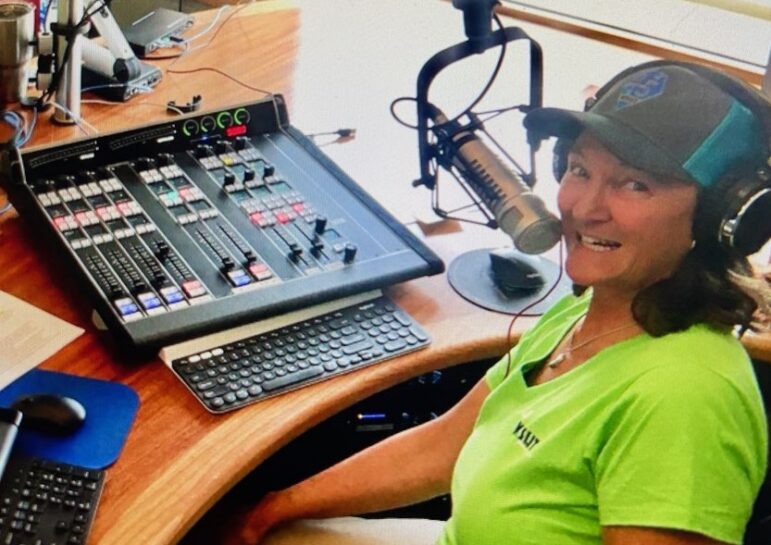
“When we’re hit by the same snowstorm, hurricane or weather emergency, when everybody has to pull together, it doesn’t matter about your political ideology,” said Tami Graham, executive director of KSUT in Ignacio, Colo.
As part of its participation in the Alliance, KSUT has been “educating our own members of Congress … even if we know our representatives are already supportive of public media and aware of our work with communities,” Graham said.
“For some of the smaller rural stations, it has elevated their level of confidence and given them a moment to shine and show off the value that they bring to public media,” she said.
Stations in the Alliance are also sharing opportunities and resources among themselves.
“When you bring different station leaders from across the United States together, we can talk about what’s working and what’s not working,” said Fry. “We don’t have to reinvent the wheel. We just have to find ways to get the communication out there … to help other stations that are encountering some of the same problems.”



